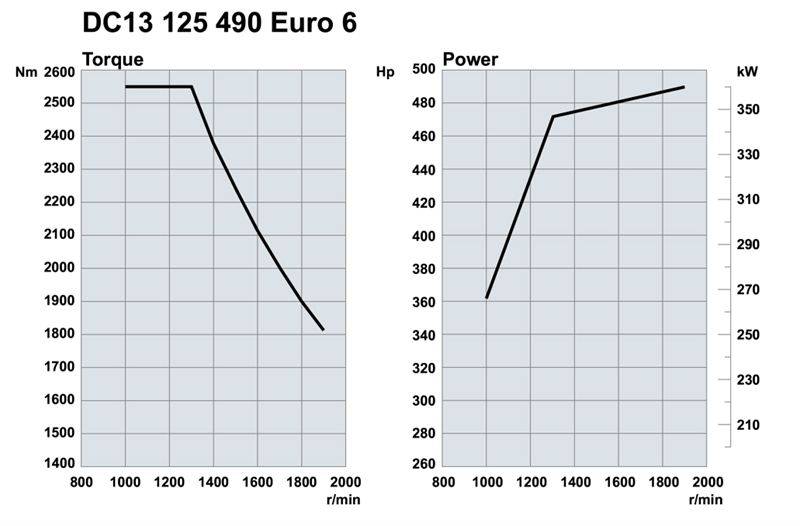Scania adds 13-litre biodiesel engines to its Euro 6 range

Scania is introducing two Euro 6-certified, 13-litre truck engines that can run on any diesel blend, right up to 100 percent biodiesel (EN 14214). The versions certified for biodiesel operation are the modular, six-cylinder, 13-litre 450 and 490 hp engines.
Scania is continuing the roll-out of its Euro 6-certified engines intended for use with 100-percent biodiesel. In October 2013, Scania introduced its robust five-cylinder, 9-litre biodiesel engine in two different output versions, 320 hp and 360 hp. These are now being followed by the 13-litre, inline six engine that will be available both in 450 hp and 490 hp versions with SCR and EGR aftertreatment systems.
The basic model of the 450 horsepower engine offers 2,350 Nm of torque from 1,000 r/min, while the 490 produces a massive 2,550 Nm from 1,000 r/min up to 1,300 r/min. It is worth noting that output declines a maximum of just 8 percent when the engines are run on 100 percent biodiesel fuel (due to the lower energy content in biodiesel).
Both SCR and EGR are used in the aftertreatment of the exhausts. The attributes of biodiesel fuel lead to an increased proportion of ash in the exhaust fumes, leading to shorter service intervals and a slightly increased consumption of fuel. Both fuel and AdBlue consumption may increase by 10 percent in an engine run on 100 percent biodiesel.
Pure biodiesel always produces notably lower carbon dioxide emissions compared with conventional diesel. Precisely how much lower depends on how the biodiesel has been produced. Certain types of biodiesel can give a carbon dioxide reduction of 80 percent or more. Scania recently closed a deal with Austrian hauler Nothegger in which one of the decisive factors was the potential for the firm to save money. In Austria, biodiesel attracts tax concessions due to the lower carbon dioxide emissions it produces.
An important aspect of biodiesel is that it is an uncomplicated fuel to use. Drivers simply need to fill up and drive away. If they find themselves somewhere where no biodiesel is available, they can just mix whatever remains in their tanks with conventional diesel. However, one condition is that biodiesel engines must always be serviced as though they were being continually operated on biodiesel.
About Scania’s biodiesel range
Scania will continue to introduce additional biodiesel engines with different output levels and in different sizes. All of Scania’s Euro 6-certified diesel engines are, even in their basic versions, certified for biodiesel blends of up to 10 percent.
“These additions underline Scania’s position as the industry leader in the biodiesel Euro 6 segment,” says Örjan Åslund, Product Affairs. “Scania is presently offering no less than 17 engines in its Euro 6 range, of which four can be run on 100 percent biodiesel. And our customers can expect more to come.”
For further information, please contact:
Johan Björkegren, Product Information Powertrain. Tel. +46 70 161 53 11,
e-mail johan.bjorkegren@scania.com
Örjan Åslund, Product Affairs. Tel. +46 70 289 83 78,
e-mail orjan.aslund@scania.com
Scania is one of the world’s leading manufacturers of trucks and buses for heavy transport applications, and of industrial and marine engines. Service-related products account for a growing proportion of the company’s operations, assuring Scania customers of cost-effective transport solutions and maximum uptime Scania also offers financial services. Employing some 38,600 people, the company operates in about 100 countries. Research and development activities are concentrated in Sweden, while production takes place in Europe and South America, with facilities for global interchange of both components and complete vehicles. In 2012, net sales totalled SEK 79.6 billion and net income amounted to SEK 6.6 billion. Scania press releases are available on www.scania.com
Tags:




